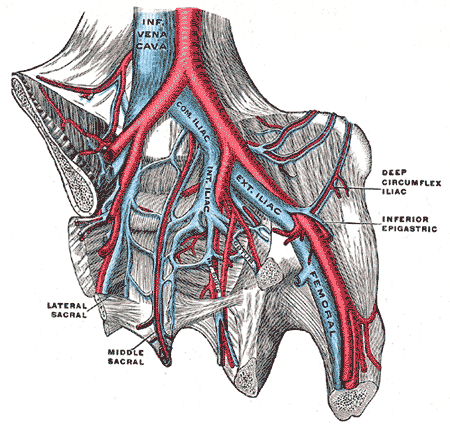Following her hospital visit on Tuesday, the campaign of Republican Rep. Lauren Boebert revealed that she had received a diagnosis of an “acute blood clot” attributed to May-Thurner Syndrome, an uncommon vascular condition.
• What is May – Thurner Syndrome?
May-Thurner syndrome, also known as iliac vein compression syndrome, is a condition characterized by the compression of the left iliac vein by the overlying right iliac artery. This compression can lead to significant venous stasis and, in some cases, the development of deep vein thrombosis (DVT) in the left lower extremity.

Causes
The primary cause of May-Thurner syndrome is the anatomical variation in the relationship between the right iliac artery and left iliac vein. In individuals with this syndrome, the right iliac artery compresses the left iliac vein against the pelvic bone, impeding normal blood flow. This compression can result in inflammation and damage to the vein wall, increasing the risk of blood clot formation.
Symptoms
Symptoms of May-Thurner syndrome may vary depending on the severity of venous obstruction and the presence of complications such as DVT. Common symptoms include:
- Swelling in the left leg or foot
- Pain or tenderness in the left leg, especially with standing or walking
- Skin discoloration or redness
- Varicose veins
- Leg fatigue or heaviness
- Development of a DVT, characterized by sudden onset of pain, swelling, warmth, and redness in the affected leg
Risk Factors
Several factors may increase the risk of developing May-Thurner syndrome, including:
- Female gender
- Age (more common in individuals between 20 and 50 years old)
- Pregnancy
- Use of hormonal birth control methods
- Prolonged immobilization or bed rest
- Obesity
- History of trauma or surgery in the pelvic region
Treatment
Treatment for May-Thurner syndrome aims to relieve venous obstruction, prevent further clot formation, and manage symptoms. Depending on the severity of the condition, treatment options may include:
- Anticoagulant medications to prevent blood clot formation
- Thrombolytic therapy to dissolve existing blood clots
- Angioplasty and stent placement to widen the compressed vein and improve blood flow
- Surgical venous bypass to redirect blood flow around the compressed segment
- Compression stockings or garments to promote venous return and reduce swelling
Complications
If left untreated, May-Thurner syndrome can lead to various complications, including:
- Recurrent deep vein thrombosis (DVT)
- Chronic venous insufficiency, characterized by leg swelling, skin changes, and ulceration
- Pulmonary embolism, a potentially life-threatening condition where a blood clot travels to the lungs
- Post-thrombotic syndrome, causing chronic leg pain, swelling, and skin changes
Early diagnosis and appropriate treatment can help prevent these complications and improve the long-term prognosis for individuals with May-Thurner syndrome. Therefore, individuals experiencing symptoms suggestive of this condition should seek prompt medical evaluation and intervention.


Pingback: Rep. Lauren Boebert Undergoes Emergency Surgery | "OUR WORLD"
Pingback: common health conditions - MedTimes